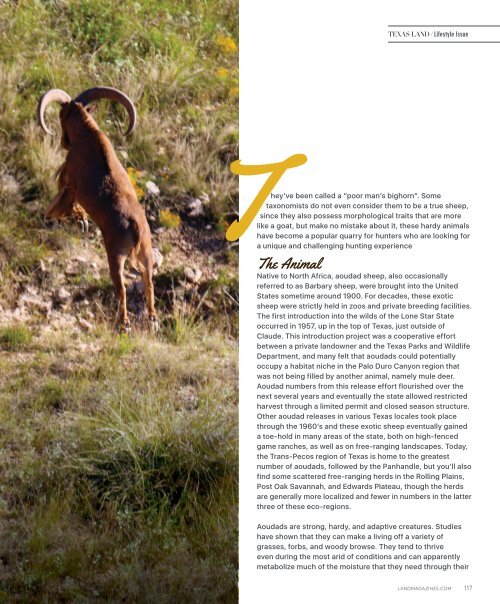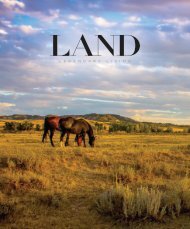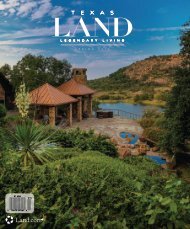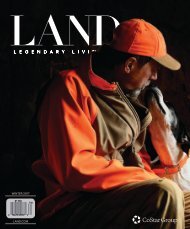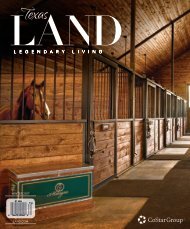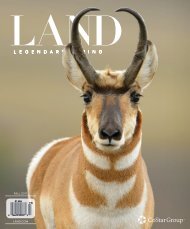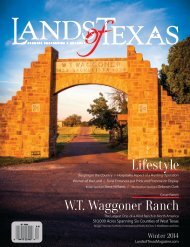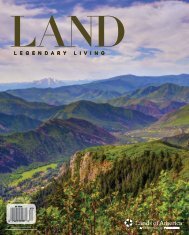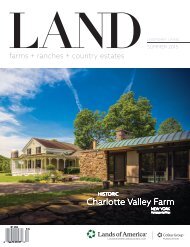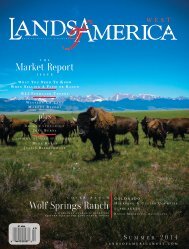You also want an ePaper? Increase the reach of your titles
YUMPU automatically turns print PDFs into web optimized ePapers that Google loves.
TEXAS LAND / Lifestyle Issue<br />
hey’ve been called a “poor man’s bighorn”. Some<br />
taxonomists do not even consider them to be a true sheep,<br />
since they also possess morphological traits that are more<br />
like a goat, but make no mistake about it, these hardy animals<br />
have become a popular quarry for hunters who are looking for<br />
a unique and challenging hunting experience<br />
The Animal<br />
Native to North Africa, aoudad sheep, also occasionally<br />
referred to as Barbary sheep, were brought into the United<br />
States sometime around 1900. For decades, these exotic<br />
sheep were strictly held in zoos and private breeding facilities.<br />
The first introduction into the wilds of the Lone Star State<br />
occurred in 1957, up in the top of Texas, just outside of<br />
Claude. This introduction project was a cooperative effort<br />
between a private landowner and the Texas Parks and Wildlife<br />
Department, and many felt that aoudads could potentially<br />
occupy a habitat niche in the Palo Duro Canyon region that<br />
was not being filled by another animal, namely mule deer.<br />
Aoudad numbers from this release effort flourished over the<br />
next several years and eventually the state allowed restricted<br />
harvest through a limited permit and closed season structure.<br />
Other aoudad releases in various Texas locales took place<br />
through the 1960’s and these exotic sheep eventually gained<br />
a toe-hold in many areas of the state, both on high-fenced<br />
game ranches, as well as on free-ranging landscapes. Today,<br />
the Trans-Pecos region of Texas is home to the greatest<br />
number of aoudads, followed by the Panhandle, but you’ll also<br />
find some scattered free-ranging herds in the Rolling Plains,<br />
Post Oak Savannah, and Edwards Plateau, though the herds<br />
are generally more localized and fewer in numbers in the latter<br />
three of these eco-regions.<br />
Aoudads are strong, hardy, and adaptive creatures. Studies<br />
have shown that they can make a living off a variety of<br />
grasses, forbs, and woody browse. They tend to thrive<br />
even during the most arid of conditions and can apparently<br />
metabolize much of the moisture that they need through their<br />
LANDMAGAZINES.COM<br />
117


